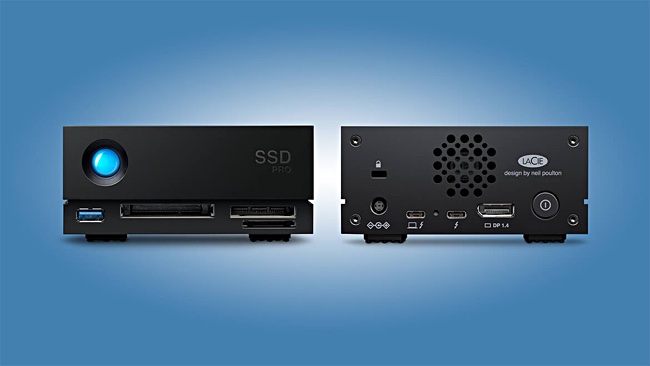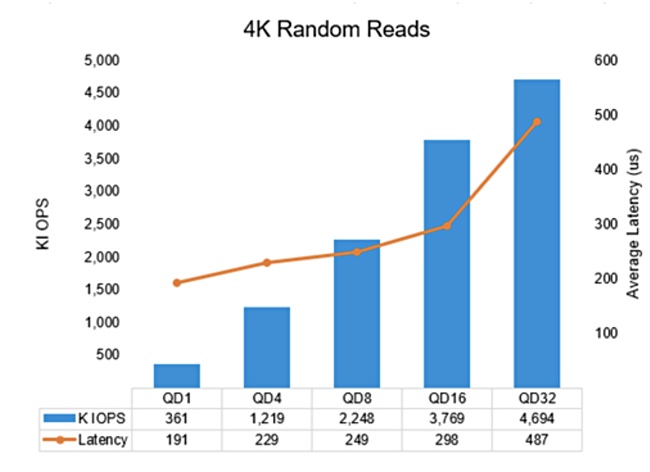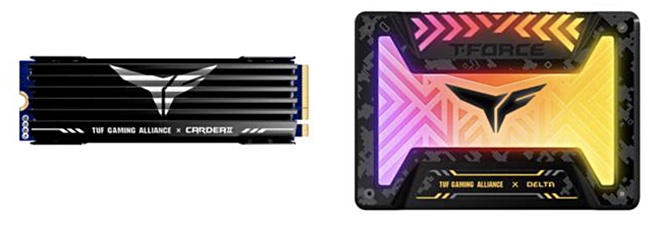Teradata has become much more serious about working in the public clouds and Western Digital has an NVMe Express-bolstering present for its zoned QLC SSD initiative.
Teradata’s head in the clouds
Legacy data warehouse Teradata has its head in the clouds in a seriously big way: AWS, Azure and GCP to be precise. It’s pushing more features into its Vantage-as-a-service products on the Big 3 of cloud. Customers get:
- Reduced network latency via Teradata’s growing global footprint, and upgrades to compute instances and network performance;
- Support for customer-managed keys for Vantage on AWS and Azure. Availability: The service level agreement (SLA) for availability is now 99.9% for every as-a-service offering. Guaranteed, higher uptime;
- Quicker compressed data migration times withTeradata’s new data transfer utility (DTU) with 20% faster transfers;
- Self-service web-based console gets expanded options for monitoring and managing as-a-service environments;
- Integration with Amazon cloud services, including Kinesis (data streaming); QuickSight (visualization); S3 (low-cost object store); SageMaker (machine learning); Glue (ETL pipeline); Comprehend Medical (natural language processing); and
- Integration with Azure cloud services, including Blob (low-cost object store); Data Factory (ETL pipeline); Databricks (Spark analytics); ML Studio (machine learning); and Power BI Desktop (visualization).
There will be more to come over time.
The Amazon and Azure Vantage enhancements are available now. They will also apply to Vantage on Google Cloud Platform (GCP), which will begin limited availability in July 2020.
WD’s Zoned Namespace spec ratified
The NVMe Express consortium has ratified Western Digital’s ZNS (Zoned Namespace) command set specification. WD has a pair of zoned storage initiatives aimed at host management of data placement in zones on storage drives.
For SMR (Shingled Magnetic Recording) HDDs:
- ZBC (Zoned Block Commands)
- ZAC (Zoned ATA Command Set)
For NVMe SSDs:
- ZNS (Zoned Namespaces) for NVMe SSDs.
These are host-managed as opposed to the drives managing the zones themselves. That means system or application software changes. It also requires support by other manufacturers to avoid zoned disk or SSD supplier lock-in. This ratification helps make ZNS support by other SSD manufacturers more likely.
ZNS is applicable to QLC SSDs where data with similar access rates can be placed in separate zones to reduce overall write amplification and so extend drive endurance. They can also provide improved I/O access latencies.

The ZNS specification is available for download under the Developers -> NVMe Specification section of the www.nvmexpress.org public web site, as an NVM Express 1.4 Ratified TP.
WD has been working with the open source community to ensure that NVMe ZNS devices are compatible with the Linux kernel zoned block device interface. It says this is a first step and modifications to well-known user applications and tools, such as RocksDB, Ceph, and the Flexible IO Tester (fio) performance benchmark tool, together with the new libzbd user-space library, are also being released.
It claims public and private cloud vendors, all flash-array vendors, solid-state device vendors, and test and validation tool suppliers are adopting the ZNS standard – but these are not named.
Blocks & Files thinks ZNS support by other SSD suppliers such as Samsung, Intel, and Micron will be essential before storage array manufacturers and SW suppliers adopt it with real enthusiasm.
WD claimed that, with a small set of changes to the software stack, users of host-managed SMR HDDs can deploy ZNS SSDs into their data centres. More from WD here.
Shorts
Data warehouser Actian has announced GA of Vector for Hadoop. This is an upgraded SQL database with real-time and operational analytics not previously feasible on Hadoop. The SW uses patented vector processing and in-CPU cache optimisation technology to eliminate bottlenecks. Independent benchmarks demonstrated a more than 100X performance advantage with Vector for Hadoop over Apache Impala.
The Active Archive Alliance announced the download availability of a report: “Active Archive and the State of the Industry 2020,” which highlights the increased demand for new data management strategies as well as benefits and use cases for active archive solutions.
Backupper Assigra and virtual private storage array supplier Zadara announced that Sandz Solutions Philippines Inc. has deployed their the Cloud OpEX Backup Appliance to to defend its businesses against ransomware attacks on backup data.
AWS’ Snowcone uses a disk drive to provide its 8TB of usable storage, not an SSD.
Enterprise Information archiver Smarsh has Microsoft co-sell status and its Enterprise Archive offering is available on Azure for compliance and e-discovery initiatives. Enterprise Archive uses Microsoft Azure services for storage, compute, networking and security.
Taipei-based Chenbro has announced its RB133G13-U10; a custom barebones 1U chassis pre-fitted with dual Intel Xeon motherboard and ready to install two Intel Xeon Scalable processors with up to 28-cores, 165W TDP. There is a maximum of 2TB of DDR4 memory, 2X 10GbitE connectivity, 1X PCI-Ee Gen 3 x16 HH/HL expansion slot and support for up to 10X hot-swappable NVMe U.2 drives. It has Intel VROC, Apache Pass, and Redfish compliance.
France-based SIGMA Group, a digital services company specialising in software publishing, integration of tailor-made digital solutions, outsourcing and cloud solutions, has revealed it uses ExaGrid to store its own and customer backups, and replicate data from its primary site to its disaster recovery site.
Estonia-based Diaway has announced a strategic partnership with Excelero and the launch of a new product, DIAWAY KEILA powered by Excelero NVMesh. Component nodes use AMD EPYC processors, PCIe Gen 4.0, WD DC SN640 NVMe SSDs, and 100GbitE networking. Sounds like a hot, fast box set.

FalconStor can place ingested backup data on Hitachi Vantara HCP object storage systems. This means data ingested by FalconStor through its Virtual Tape Library (VTL), Long-Term Retention and Reinstatement and StorSafe offerings can be deduplicated and sent to an HCP target system. Physical tape can ingested by the VTL product and sent on to HCP for faster access archive storage.
Hitachi Vantara was cited as a Strong Performer in the Forrester Wave Enterprise Data Fabric, Q2 2020 evaluation. But Strong Performers are second to Leaders and the Leader suppliers were Oracle, Talend, Cambridge Semantics, SAP, Denodo Technologies, and IBM. Hitachi V was accompanied asa Strong Performer by DataRobot, Qlik, Cloudera, Syncsort, TIBCO Software, and Infoworks. Well done Hitachi V – but no cigar.
Backupper HYCU has a Test Drive for Nutanix Mine with HYCU initiative. Customers can try out Nutanix Mine with HYCU at their own pace, with in-depth access and hands-on experience by launching a pre-configured software trial.
Data protector HubStor tells us it has revamped its company positioning as a SaaS-based unified backup and archive platform. Customer adoption remains strong and it’s adding one petabyte of data into the service each month as of recent months.
China’s Inspur has gained the number 8 position in the SPC-1 benchmark rankings with an AS5500 G3 system scoring 3,300,292 SPC-1 IOPS, $295.73/SPC-1 KIOPS and an 0.387ms overall response time.

Seagate’s LaCie unit announced new 1big Dock SSD Pro (2TB and 4TB SSD capacities) and 1big Dock (4TB, 8TB, and 16TB HDD capacities) storage for creative professionals and prosumers. Both are designed by Neil Poulton to look good on your desktop. The 1big Dock SSD Pro is for editing data-intense 6K, 8K, super slow motion, uncompressed video, and VFX content. The 1big Dock has direct ingestion of content from SD cards, CompactFlash cards, and USB devices and serves as the hub of all peripherals, connecting to the workstation with a single cable.

Micron Solutions Engineering Lab recently completed a proof of concept using Weka to share a pool of Micron 7300 PRO with NVMe SSDs and obtained millions of IOPS from the file system. The testing used six nodes in a 4 + 2 (data + parity) erasure-coding configuration for data protection. There’s more information from Micron here.

Nutanix Foundation Central, Insights and Lifecycle Manager have been updated to enable Nutanix HCI Managers to do their work remotely.
- Foundation Central allows IT teams to deploy private cloud infrastructure on a global scale from a single interface, and from any location.
- Insights will analyse telemetry from customers’ cloud deployments, including all clusters, sites and geographies, to identify ongoing and potential issues that could impact application and data availability. Once identified, the Insights service can provide customised recommendations.
- Lifecycle Manager (LCM) will deliver seamless, one-click upgrades to the Nutanix software stack, as well as to appliance firmware – without any application or infrastructure downtime.
Nutanix and HPE have pushed out some new deals with AMD-based systems offering better price/performance for OLTP and VDI workloads, ruggedised systems for harsh computing environments, certified SAP ERP systems, higher capacity storage for unstructured data, and turnkey data protection with popular backup software. More from Nutanix here.
Cloud data warehouser Snowflake, with an impending IPO, today announced general availability on Google Cloud in London. The UK’s Greater Manchester Health and Social Care Partnership is using Snowflake in London. This follows Snowflake’s general availability on Google Cloud in the US and Netherlands earlier this year.
Storage Made Easy (SME) has signed an EMEA-wide distribution agreement with Spinnakar for its Enterprise File Fabric, a single platform that presents and secures data from multiple sources, be that on-premises, a data centre, or the Cloud. The EFF provides provides an end-to-end brandable product set that is storage agnostic, and currently supports more than 60 private and public data clouds. It supports file and object storage solutions, including CIFS/NAS/SAN, Amazon S3 and S3 compatible storage, Google Storage and Microsoft Azure.
StorageCraft announced an upgrade of ShadowXafe, its data and system backup and recovery software. Available immediately, ShadowXafe 4.0 gives users unified management with the OneXafe Solo plug-and-protect backup and recovery appliance. It also has Hyper-V, vCenter and ESXi support and consolidated automated licensing and billing on ConnectWise Manage and Automate business management platforms.
StorOne has launched its Optane flash array, branding it S1:AFAn (All-Flash Array.Next) claiming it’s the highest-performing, most cost-effective storage system on the market today and a logical upgrade to ageing All-Flash Arrays. CompuTech International (CTI) is the distributor of StorONE’s S1:AFAn. Use TRU price to run cost comparisons.
Europe-based SW-defined storage biz StorPool has claimed over 40 per cent y-o-y growth in H1 2020 and a 73 per cent NPS score. New customers included a global public IT Services and consulting company, a leading UK MSP, one of Indonesia’s largest hosting companies, one of Netherland’s top data centres, and a fast-growing public cloud provider in the UK. StorPool is profitable and hasn’t had any funding rounds since 2015.
TeamGroup announced the launch of the T-FORCE CARDEA II TUF Gaming Alliance M.2 Solid State Drive (512GB, 1TB) and T-FORCE DELTA TUF Gaming Alliance RGB Gaming Solid State Drive (5V) (500GB, 1TB), both certified and tested by the TUF Gaming Alliance.

Frighteningly fast filesystem supplier WekaIO said it has been assigned a patent (10684799) for “Flash registry with write levelling,” and has forty more patents pending. Forty? Yes, forty.








